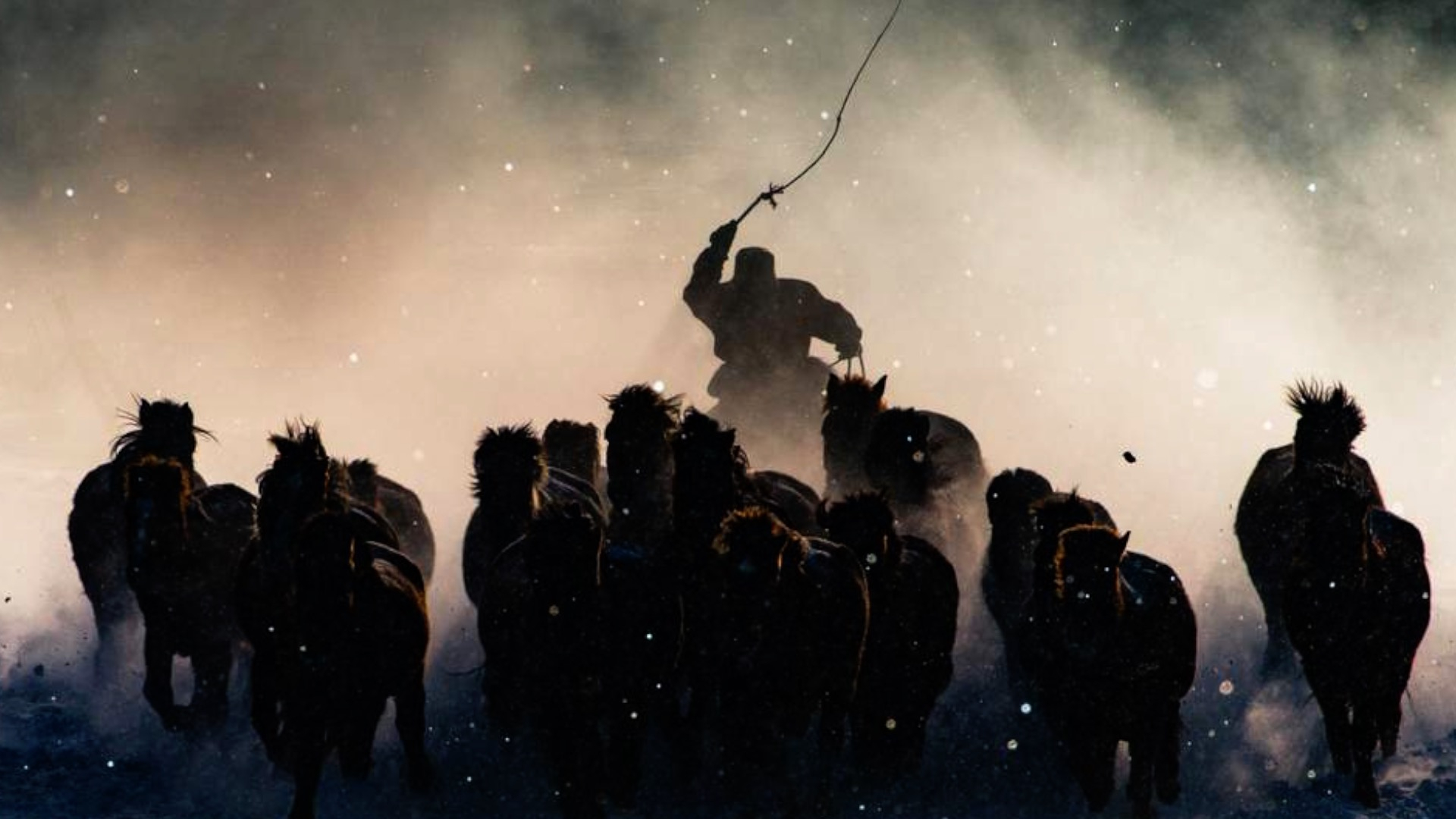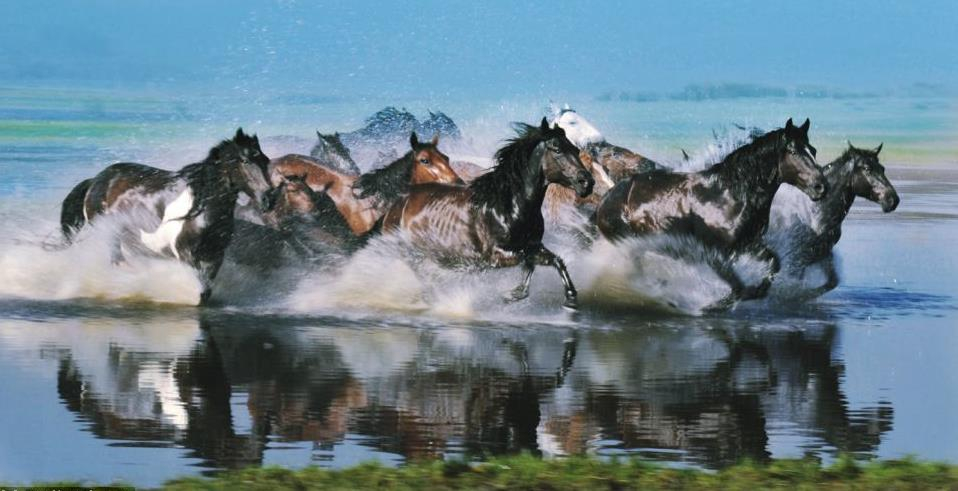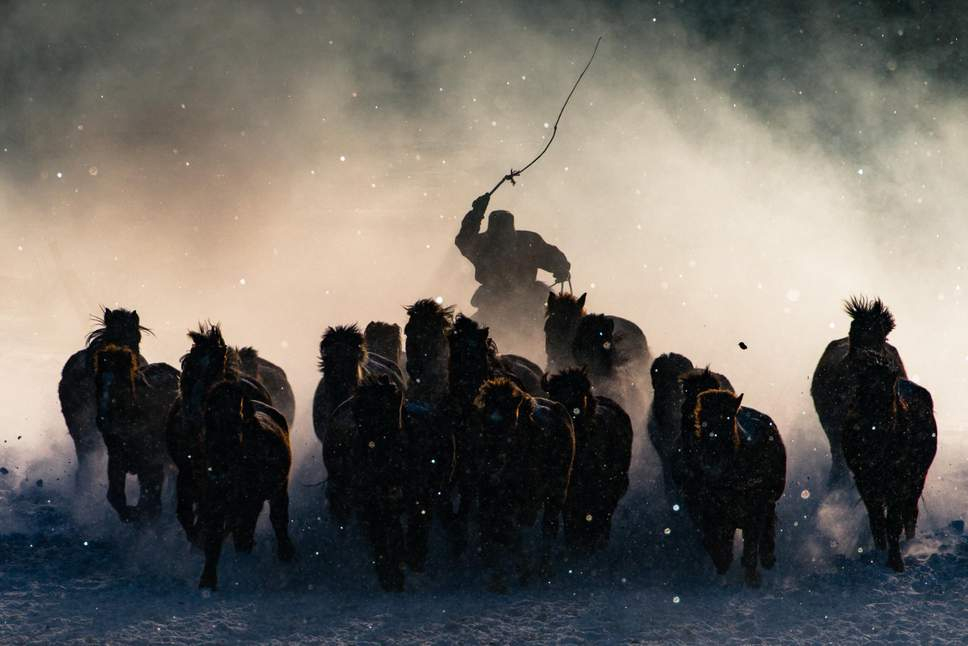
Lifestyle
17:23, 16-Aug-2018
The culture of horsemanship in Inner Mongolia
Updated
17:15, 19-Aug-2018
By CGTN's Rediscovering China
00:46

On the grasslands of Inner Mongolia, it's said that a man without a horse is like a bird without wings.
This is a place where horse and rider can still be seen flying at full gallop across the landscape, much as they did back in the time of the conquering khans. And the renowned horsemanship of these people is about to be put to the test.
In 2016, with his "Charging Inner Mongolia horseman," Hong Kong photographer Anthony Lau, swept the top prize in the American National Geographic Travel Photographer of the Year.
Lau described how he made the photograph by saying,"The winter in Inner Mongolia is very unforgiving. At a freezing temperature of minus twenty and lower, with a constant breeze of snow from all direction, it was pretty hard to convince myself to get out of the car and take photos."

Making a splash: It is no surprise that the horse is associated with strength and boldness when you see them tear through this peaceful river, their coats glistening in the September sun. /Caters News Agency Photo
Making a splash: It is no surprise that the horse is associated with strength and boldness when you see them tear through this peaceful river, their coats glistening in the September sun. /Caters News Agency Photo
"When I saw Inner Mongolia horsemen showing off their skills and commanding the steed from a distance. I quickly grabbed my telephoto lens and captured the moment when one of the horseman charged out from morning mist."
What Anthony Lau captured may not be an unusual sight in either the Inner Mongolia Autonomous Region or Mongolia, but it is rare anywhere else.That is why Mongolia is known as a land of nomadic culture, vast open space and, of course, horses!
As long as a hundred years ago, an unknown traveler to Mongolia observed, "To appreciate the Mongol you must see him on horseback, and indeed you rarely see him otherwise, for he does not put foot to ground if he can help it. The Mongol without his pony is only half a Mongol, but with his pony he is as good as two men. It is a fine sight to see him tearing over the plain, loose bridle, easy seat, much like the Western cowboy, but with less sprawl."

'Winter Horseman' by Anthony Lau
'Winter Horseman' by Anthony Lau
It is no wonder that Mongolian nomads have long been considered to be some of the best horsemen in the world.
During the time of Genghis Khan, Mongol horse archers were capable of feats such as sliding down the side of their horse to shield their body from enemy arrows, while simultaneously holding their bow under the horse's chin and returning fire, all at full gallop.
It is a joy to see the archers on horseback as the strength, swiftness and elegance of a Mongol surpasses that of any ballet dancer.
But still, it has to be noted that nowadays, in Inner Mongolia, many parents prefer to send their children to the urban areas to get educated and settled. To these kids, horsemanship is no longer a priority or necessity in life. The traditional nomadic culture is vanishing.
Mao Haoer, a herder in his 80s, is nostalgic about the different childhood of the adults, "I've been grazing livestock all my life. I love my horses and know how to ride. I began grazing livestock as soon as I could walk, just like the other kids. Back then it was something children did, but not now. The kids today go to kindergarten in the city and only come home for the weekend. The traditional grassland way of life is disappearing."

SITEMAP
Copyright © 2018 CGTN. Beijing ICP prepared NO.16065310-3
Copyright © 2018 CGTN. Beijing ICP prepared NO.16065310-3